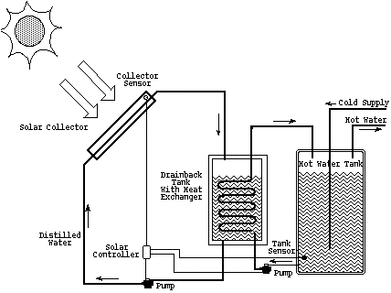Passive Solar Heating
Passive water heating
There are two types of passive solar water heaters.
Direct System
The first design passes the water to be used directly through the solar energy collector. The solar energy is collected by using a black painted metal tank or black plastic tubes mounted on a roof. These collectors absorb energy during the day for domestic use during the evening.
Benefits
Setbacks
Indirect system
This method employs a separate fluid circuit to transfer heat from the solar collector to the usable water.
Benefits
http://www.therenewableenergycentre.co.uk/solar-heating/
There are two types of passive solar water heaters.
Direct System
The first design passes the water to be used directly through the solar energy collector. The solar energy is collected by using a black painted metal tank or black plastic tubes mounted on a roof. These collectors absorb energy during the day for domestic use during the evening.
Benefits
- Less storage transfer loss
- Low start up cost & low maintenance
Setbacks
- Over long term use lime scaling and corrosion of materials can occur to surfaces in contact with water.
- Systems require draining during the winter
Indirect system
This method employs a separate fluid circuit to transfer heat from the solar collector to the usable water.
Benefits
- Less risk of corrosion or bursting
- Allows a higher temperature collection
- Reduces deposition of solids within the collector during stagnation
- Higher purchase cost
- Location (latitude, orientation and
- Orientation
- Daylight hours received
- Maintenance and upkeep (dirty solar collectors are less efficient than clean ones!)
http://www.therenewableenergycentre.co.uk/solar-heating/

